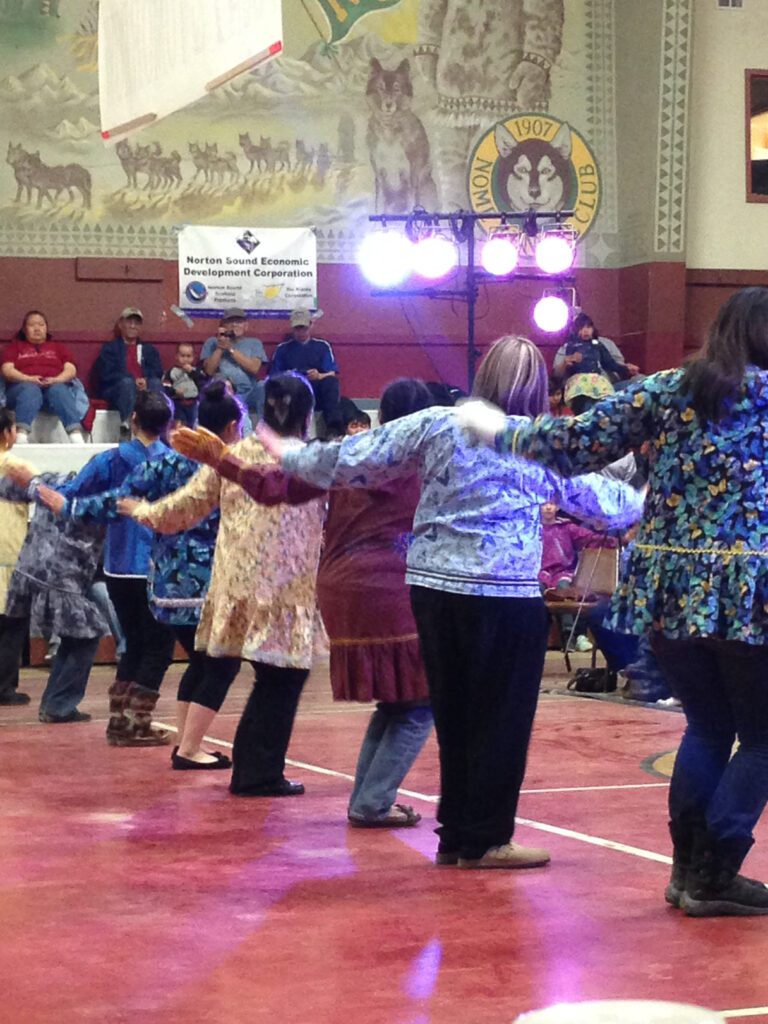This week I attended Kawerak’s 40th Year Anniversary Regional Conference. The three-day event brought together native speakers, workshops, and performances from all over the region, including celebrated poet Joan Kane, 2011 Iditarod champion John Baker, and doctor/singer/songwriter Darryl Tonemah. I kept busy attending workshops, listening to open forums, and viewing exhibits, such as the one on traditional native clothing. I also recorded a spot series with Youth Leaders from across the region.
And, oh, that’s right. I watched a lot of dancing and had Eskimo ice cream.

Akutuq (pronounced ah-GOO- duck), or Eskimo ice cream, is an acquired taste, to say the least. In Yupik it means “something mixed.” Made of mashed-up fish, berries, and some type of animal fat (usually reindeer, seal, elk, though these days made with Crisco), akutuq is served frozen at special parties and celebrations. The dish can be confusing if your idea of ice cream comes in the form of a Ben & Jerry’s concoction that you buy from your local grocery store, but don’t let that stop you from trying it! My mother’s rule? If you are invited to dinner somewhere, you eat whatever’s put in front of you. It’s a form of disrespect to not even try.
When encountering a new culture, my instinct is to make connections between what I am experiencing and what I already know, and what I know is Bolivian culture.
Both cultures are collective and family-centric, with a ladder of respect towards our parents and grandparents. We have foods native to our region that are incorporated into everything we eat (Alaska:fish::Bolivia:potatoes), traditional dances, and coming of age rituals. To different degrees, I think we all also struggle with celebrating our past while living 21st century lifestyles.
Making these comparisons can be dangerous though. Thinking “we are alike” could soon be interpreted as “we are the same”. There are connections, but we are not the same. First, Bolivia is a country, not a state, the native population is much larger, with a stronger representation in government (our country’s president is Native American). Furthermore, most Bolivians are Mestizos, a blend of native and white.
Bolivian native languages are not becoming extinct, and spanish certainly isn’t either. I don’t know what I would do if I didn’t have anyone to speak my own language to, or tell certain jokes to. Would I have to write a manual explaining why something is funny? Could that happen? No. I don’t want that to happen. I don’t want that to happen to anybody.
That’s why I celebrate Alaskan native culture, this is why we should all celebrate each other’s cultures, even if we feel a little awkward sitting on the bleachers not knowing the steps to the dance on stage. They’re not my dances but they are just as important. In that, they are the same.
On the last day of the conference, a group of girls ran on stage to dance with the Savoonga dancers. One of them sported a traditional kuspuk, the other a a pink tutu and a batman t-shirt. Something mixed, I thought. And I smiled.











